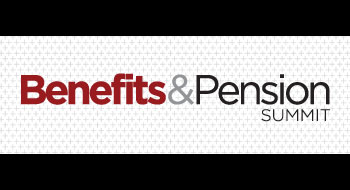

Calvin Jordan, CEO of the Nova Scotia Association of Health Organizations (NSAHO) Pension Plan in Bedford, N.S., discussed how this DB plan uses leverage to improve its asset liability matching at the Pension & Benefits Conference on April 27 in Toronto.
The $3.6-billion plan’s asset mix is 25% fixed income (65%, but 40% is leveraged), 40% equities and 35% alternatives. While using leverage in the asset strategy raises risk to the assets, it decreases risk to the balance sheet, he explained.
The theme of Jordan’s presentation was The Good, the Bad and the Benign—each word describing leverage in some way.
The good
The NSAHO pension plan uses leverage to reduce its uncompensated policy risk by hedging interest and inflation rate risk.
The net impact of this equals 40% x (capital gains/losses + carried interest), said Jordan. “Capital gains and losses should reduce our asset liability mismatch risk, but note that some years we will have capital losses,” explained Jordan.
The “carried interest” (i.e., the bond yield minus the short-term interest), he noted, is just a bonus, but when the yield curve inverts, the bonus turns negative. “Our perspective is that the ‘carried interest,’ on average, over time, will tend to be positive,” he said. “In other words, long-term interest rates will tend to be higher than short-term interest rates.”
In an indirect way, by reducing your uncompensated policy risk, you can get a small added bonus: possible solvency relief, said Jordan.
“This strategy, may increase the actuary’s going concern investment assumption. If that increased investment assumption will reduce your current service cost, he explained, then that reduced current service cost will leave more contribution left over for special payments on a solvency deficiency,” he said.
However, Jordan offered a word of caution. “From our perspective, we don’t have any interest rate anticipation skills. And it’s important to recognize that if you are really planning to do this but postpone until bonds get cheaper, you’re essentially being an ‘interest rate anticipator,’” he said, adding that even professional bond managers consistently get this wrong.
The bad
The “bad” part of leverage that Jordan highlighted was the credit spread charged by mortgage lenders on real estate assets. To minimize credit spreads the NSAHO Pension Plan tries to position leverage in the fund where it is cheapest.
The NSAHO plan—which allocates 12.5% of its $3.6 billion to real estate—strives for 0% mortgage amount on real estate, where the common practice in the industry is to leave it up to the investment manager, said Jordan. “It’s not that we avoid leverage,” he explained, “it’s just that we position it elsewhere in the portfolio by way of the unfunded positions that we have, the derivate exposures to things like U.S. large cap equities and high-yield credit.”
But while the NSAHO is content with this approach, Jordan said he has heard some arguments against it. “We’ve heard things like the leverage within the real estate portfolio is necessary in order to obtain reasonable diversification. In other words, we need to have more money so we buy more malls. From my perspective, 6.25% with leverage or 12.5% without leverage, we get the same number of malls.”
Another critique is that a reasonable amount of leverage can help increase returns, he said. “We agree, but we don’t need the investment manager to manage our leverage for us.”
The benign
Finally, the benign: portable alpha. Here, the NSAHO can increase expected compensation from its active risk budget.
“All you’re doing with portable alpha is rather than actively manage some of the traditional asset classes (e.g., domestic fixed income, large cap U.S. equities), you manage those passively and manage them synthetically on an unfunded basis, ” said Jordan. The cash that is freed up can be used to generate a rate of return that has as low equity beta as possible.
“You’ll end up with risk impact on a fund that is similar to the risk impact if you were actively managing those traditional exposures, but with a higher expected rate of return.”
We’re talking about a relatively small amount of risk impact, he continued. “Leverage can be used to implement a portable alpha strategy, focusing active management on markets that are believed to offer better potential for added value.”
The traditional approach is to invest cash in U.S. equities, for example, so that the return equals the U.S. market index return, plus or minus whatever value is added or subtracted from active management, he explained.
With portable alpha, the plan uses derivatives to get exposure to U.S. equities. What you’ll end up with is a rate of return that matches what the index gets, plus the cost of financing.
“We’ll invest the freed up cash in hedge funds (chosen to provide low market exposure) and the return equals the U.S. market index return, minus the financing costs, plus the hedge fund returns,” he said. “The total plan risk impact is similar to active management risk.”
Jordan says there are new risks that are created, however: liquidity, headline and counterparty risks. “These are risks, but they’re risks that can be managed,” Jordan reminded the audience. “But remember that our alternative is not no risk at all; our alternative is to have more equity exposure—your most risky asset class, publicly traded equities—and uncompensated interest and inflation sensitivity. So you’ve got to weigh one against the other.”
Jordan pointed out that the size of the plan is no barrier to following such a strategy as there are several financial institutions that offer variations of the strategy.
“It’s pretty easy to implement once you get to the point that you want to implement it.”
